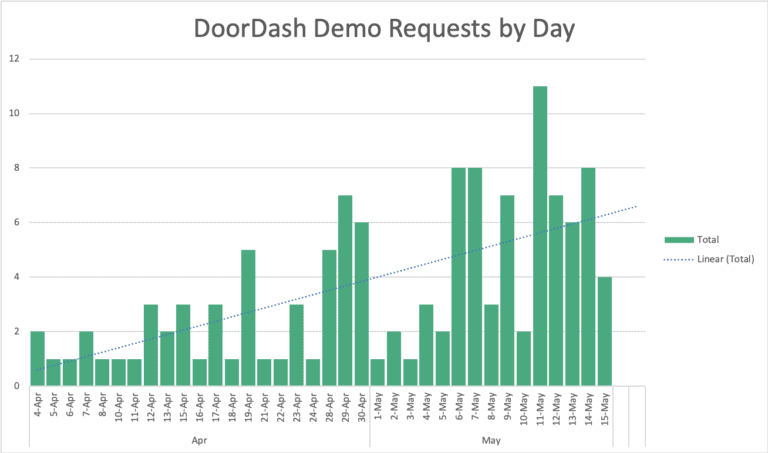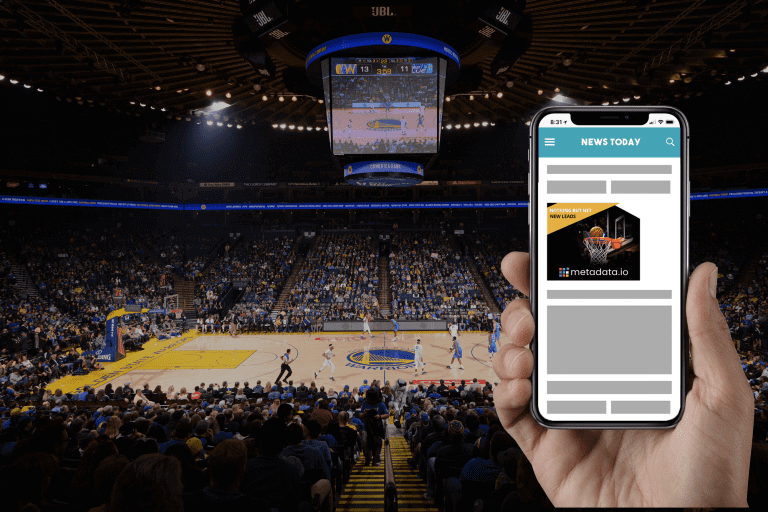The Case for Multichannel Marketing and How B2B Marketers Can Nail Their Strategy This Year
Since the dawn of business, marketers have embraced multichannel strategies to reach their customers. As online shopping grew, these strategies evolved to include digital channels, and companies acted swiftly.
For example, L.L. Bean hired two advertising firms in 2005 to help it look for a “new approach to communicating with web shoppers” as online sales grew.
B2B marketers are certainly embracing multiple channels to reach buyers across complex buyer journeys. Gartner describes the new B2B buying journey as a “long, hard slog.” I couldn’t agree more.

Despite the pressing need for multichannel marketing, it can still be intimidating, thanks to challenges around execution, measurement, and reporting. As a result, many marketers are asking themselves, “Is it even worth figuring out?”
Yes, it is.
Why B2B marketers are still hesitant about multichannel marketing
If you asked 10,000 B2B marketers if multichannel marketing was important, they would all say yes (or at least they all should). While I’ll admit many marketers are still wrapping their heads around multichannel strategies—and rightfully so—I’m convinced they all know that people don’t make B2B purchase decisions in siloes or based on one touchpoint, like a social ad or product page.
This begs the question: Why are some B2B marketers avoiding multichannel strategies?
Two reasons come to mind:
- They have a “which-channel-works?” mindset: Email marketing doesn’t work. Your target audience doesn’t use Facebook. LinkedIn is the only channel worth your budget. You’re constantly flooded with mixed messages about which channels work and which burn a hole in your wallet. Unsurprisingly, this confusion can push marketers to embrace a timid mindset that prevents them from getting started—or sticking with—multichannel marketing.
- Multichannel marketing is freakin’ hard: The channels that could make up a multichannel marketing strategy, including social, search, and display, exist in siloes. This means marketers need to build, launch, optimize, and report on their campaign with each channel’s native ad tools. Not only does this require a painful amount of button-pushing, but the channels don’t work together, making reporting a nightmare. No matter how hard they try, marketers can’t connect the dots and tie multichannel campaigns to pipeline and revenue. In fact, around 80% of CMOs struggle to measure the impact of multichannel marketing.

So it’s true; multichannel marketing is hard to do and even harder to measure. But doubling down on just one channel not only ignores the natural behaviors of your customers and prospects, but it eliminates the ROI of such strategies, too.
The (open and shut) case for multichannel marketing
I won’t bury the lede.
According to data that’s based on $80M in paid spend by Metadata customers, running campaigns on multiple channels is better for your budget and your business.
Let’s break down ROI by channel count:
- 1 channel: 3.73x
- 2 channels: 7.79x
- 3 channels: 3.54x
- 4 channels: 4.86x
- 5 channels: 2.23x

A few things caught my eye when I initially looked at this data—the first one is obvious.
Metadata customers running campaigns on one channel still saw an average ROI of 3.73x. So, if any of your peers tell you that “paid advertising is dead,” send them this article.
The next two things I noticed were just as obvious. According to our data, Metadata customers investing in two channels saw an average return of 7.79x, while those investing in four channels saw a return of 4.86x.
Pretty cool, right?
Now I’ll address the 800-pound gorilla: Why did ROI fall between 2 and 3 channels and again at 5?
Simple. It’s because this data is a representation of Metadata customers, many of which are small-to-medium-sized businesses. Do some of our customers have the budget to spend across four or five channels? Sure, but the majority of them can’t throw money at more than a few channels. Instead, they run thousands of experiments, leave no stone unturned, and allocate their spend on the few channels that give them the best return. According to more than $52MM in spend, that “way” is two channels.
Would this chart look different if we collected data from every B2B marketer around the world? Absolutely. I don’t know exactly what that chart would look like, but I can tell you with absolute certainty that it’d tell the same story as the one above: The more channels, the better.
Multichannel marketing will make you resilient
If the ROI of multichannel marketing isn’t enough to convince you it’s figuring out, maybe this will sway you: Multichannel marketing can make you more resilient to the ebbs and flows of individual channels, which we saw a lot of this year.
In January, our customers saw an average ROI of 13.58x on Facebook. In February, that number dropped to 3.24x and has hovered there ever since. LinkedIn isn’t immune to decreases, either. In August, the average ROI on the B2B marketing playground was 6.86x before falling to 2.1x in September.

For marketers embracing a single-channel strategy, their campaigns likely took a hit during these valleys (although the returns were still there).
By spreading your budget across channels, you can protect yourself from these fluctuations and maximize every penny throughout the year. Just like the smartest investors never put all of their money in one stock or fund, you shouldn’t spend your whole budget on one channel. It’s too risky and leaves performance gains on the table.
This mindset goes beyond paid advertising, too. While I’m (obviously) a big fan of paid ads, I’m a realist and understand they can’t be your only source of pipeline and revenue. Non-paid tactics like emails, referrals, and SEO need to play a role as well.
Plus, spreading your wings across channels ensures you don’t miss anything big. For example, if you were spending every cent on search ads in mid-2023, the launch of LinkedIn’s thought leader ads may have gone right over your head.
What to do if your multichannel strategy isn’t working
If your multichannel strategy isn’t doing it for you, it’s likely because there’s something funky with your audience, ads, or assets, aka the three As. While we typically talk about these in the context of experimentation, the three As are also the foundation of your campaigns and, therefore, can help you diagnose any missteps.
So, if your strategy isn’t cutting it, ask yourself which of the three As isn’t where it needs to be:
- Audience: Are you targeting the right people? Have you nailed your ideal customer profile (ICP)?
- Ads: Are you using the right ad types on the right channels? Which calls to action (CTAs) are you using?
- Assets: Is your messaging on point? Are you offering something worthy of their conversion, like a free trial or webinar?
It’s often pretty tough to figure out which of these elements is keeping your strategy from reaching its potential.
Metadata can help with that.
With Metadata, you can experiment with the three As across channels and get a true view of what’s working and, in this case, what’s holding your multichannel campaigns back. You can think of Metadata as a diagnostic tool that accelerates the problem-solving process.

How to get started with multichannel marketing
The first step on your path to multichannel marketing success is counterintuitive but bear with me.
The first thing you want to do is to pick one channel. Yep. The first step on your multichannel marketing journey is to do the opposite and invest in one channel.
Pick one channel (likely LinkedIn) and pour your time, energy, and ad dollars into it. Target different audiences. Try different ad types. Lure your audience with different offer types and CTAs. Test everything and anything; your only goal is to find out what works on that channel.
But don’t expect to get an answer overnight. We typically tell our customers to expect to spend between $10K and $20K a month for a couple of quarters before they can say “yay” or “nay” to a channel.
Once you nail that channel, rinse and repeat with others until you’re confident in your multichannel approach. Give it a few quarters, and you’ll have a multichannel strategy optimized for ROI. This is exactly what we did internally at Metadata.
How Metadata does multichannel marketing
We’re a cards-on-the-table kind of brand, so here you go. Right now, we split our budget across LinkedIn (70%) and Facebook (30%).
LinkedIn is our lead generation engine, and we optimize accordingly by having Metadata reallocate our budget to the ads that drive the most pipeline and revenue.
Meanwhile, Facebook is for brand awareness, meaning we track higher-level metrics like impressions and clicks. Although Facebook is growing in popularity among B2B marketers, it might not be the ROI powerhouse you’re looking for, but that doesn’t mean ignore it.
We see Facebook as a brand awareness primer. We don’t expect our target audience to convert from Facebook. Instead, we want them to learn about us, keep us top-of-mind, and ultimately convert them on LinkedIn when they’re (likely) in a B2B mindset. This is the power of multichannel marketing.
That said, this is our strategy right now. We’re always spending on both channels, experimenting at scale, and figuring out what our audience likes (and doesn’t). So, while our multichannel strategy leans in favor of LinkedIn right now, who’s to say it won’t shift Facebook’s way next year?
Fun fact: We’re actually starting to see more leads come in from Facebook and Instagram, so we’re using Metadata Optimizer to handle the budget pacing and allocation of dollars. It funnels money to the highest-performing ads across our channels. (More on this to come in future posts!) 🙂
Get started with multichannel marketing with Metadata
Multichannel marketing with Metadata starts with an experimentation framework that tests every facet of paid advertising. Experiment like it’s no one’s business and meticulously assess the results. Do not, under any circumstances, rely on others for answers, and definitely don’t draw conclusions from what your second and third connections are posting about on LinkedIn.

But the multichannel magic with Metadata really happens when you integrate with Salesforce or Hubspot. By integrating with your customer relationship management (CRM) technology, you can launch multichannel campaigns with confidence because Metadata will optimize your budget toward pipeline, regardless of the channel.
Are more opportunities coming from LinkedIn? Great. Let’s spend more there.
Are search ads having a bigger impact? Heck yeah. Metadata will invest more there. (Click here to learn more about how Metadata Optimizer works.)

Metadata follows the dollar signs. Full stop. And you can see all of this magic in one place, giving you a single source of truth to assess your multichannel strategy.
Want to learn more about how Metadata can help you maximize your multichannel strategy? Book an intro today.


